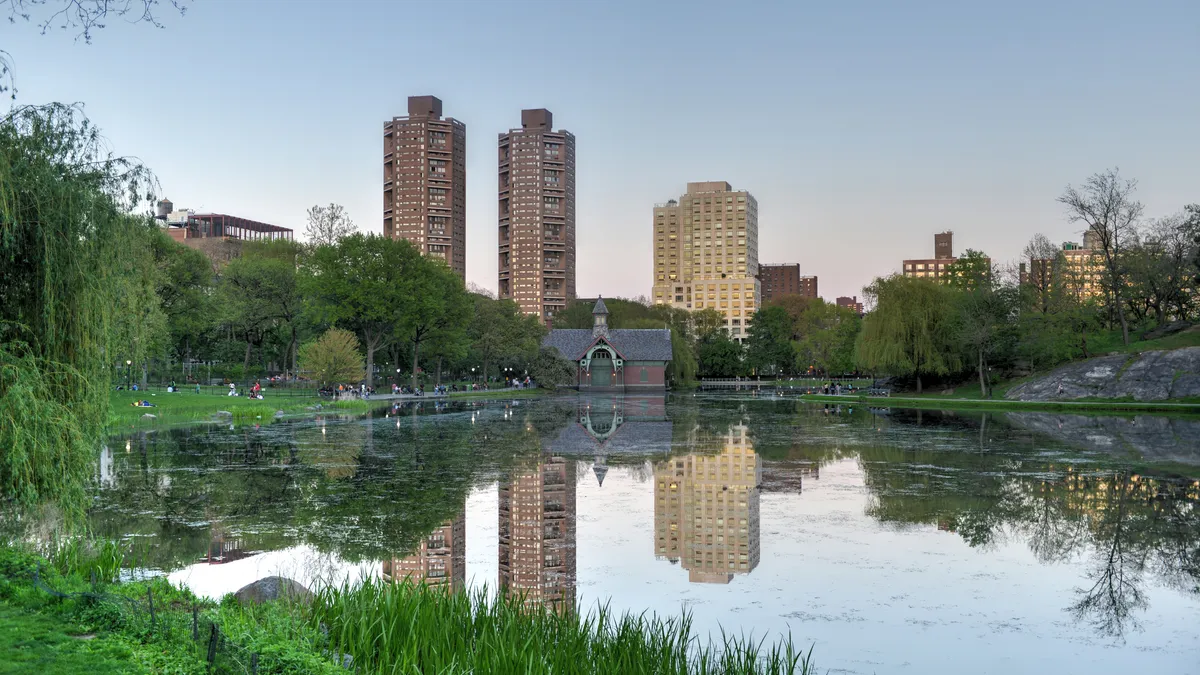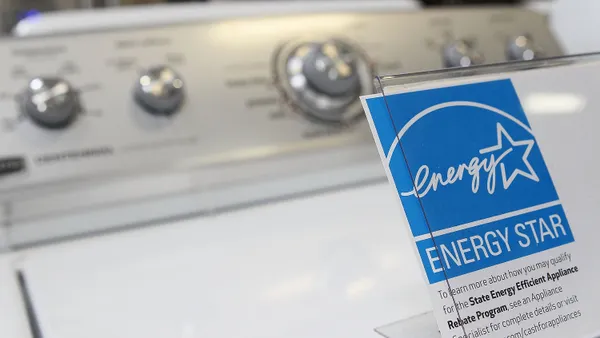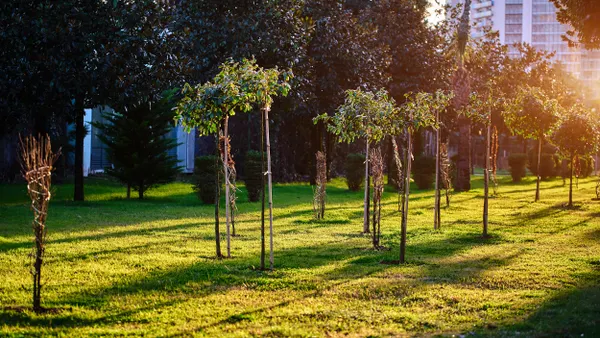Dive Brief:
- New York is funding 13 green infrastructure projects across the state with $60 million in grants, Gov. Kathy Hochul announced on Wednesday.
- The funds will support the construction of infrastructure such as porous pavement, small pocket parks and tree trenches, which are rows of trees connected by an underground stormwater infiltration system.
- In a statement, Hochul pointed to Hurricanes Helene and Milton, which have devastated communities in the Southeast with flooding, as “another reminder of the urgency needed in investing in resiliency measures to keep our communities safe.”
Dive Insight:
Many structures qualify as green infrastructure, from bioswales that redirect stormwater to green roofs on top of buildings. The U.S. Green Building Council defines green infrastructure as “any practice that uses or replicates natural systems to achieve a desired outcome.” That includes permeable pavement because it handles rain similarly to natural landscapes, according to the Council.
This approach has become more popular among cities seeking to offset severe weather impacts driven by climate change while increasing green space for communities. An April analysis of 54 public agencies’ climate adaptation plans by the Regional Plan Association, a New York City-based nonprofit, found that nature-based solutions to reduce flood risk comprised the largest number of adaptation strategies across the documents.
But green infrastructure is most effective when it’s used “strategically” alongside other types of engineered infrastructure, like sewers, according to Groundwork USA, a nonprofit that advocates for resilient neighborhoods.
The largest green infrastructure grants announced by New York on Wednesday will go to New York City, where about a year ago, heavy rain flooded streets and disrupted train services.
The city is getting more than $26 million, split among three projects. The first, receiving $10 million, will dig up and reroute a brook that was historically dammed and buried. By restoring the waterway to its natural state, the project will reduce combined sewer overflows into the Harlem River by more than 200 million gallons each year, according to a press release. It will also create a new park space and extend an existing greenway.
The city is getting $10 million for another project that will turn bodies of water in Central Park into a multi-pond system to manage stormwater, hopefully reducing flood risk in areas of the Harlem neighborhood. Meanwhile, the New York City Housing Authority will use over $6.8 million to manage stormwater at a public housing building.
Addressing climate change and better managing stormwater will be costly, noted NYC Chief Climate Officer and Department of Environmental Protection Commissioner Rohit Aggarwala in a statement. “These Green Resiliency Grant awards are a great example of the State tackling the issue and joining the City in sharing these costs,” he said. New York City announced in July that the city is spending $32 million on its first large-scale implementation of porous pavement, which will cover seven miles of road in Brooklyn.
The state’s Green Resiliency Grant program is supported by the Clean Water, Clean Air, and Green Jobs Environmental Bond Act. The ballot measure approved by voters in 2022 makes $4.2 billion available for environmental and community projects.
Correction: A previous version of this article misstated the volume of combined sewer overflows into the Harlem River that New York state says could be avoided by one New York City green infrastructure project it funded. The project to restore a brook to its natural state would reduce such overflows by over 200 million gallons annually.











